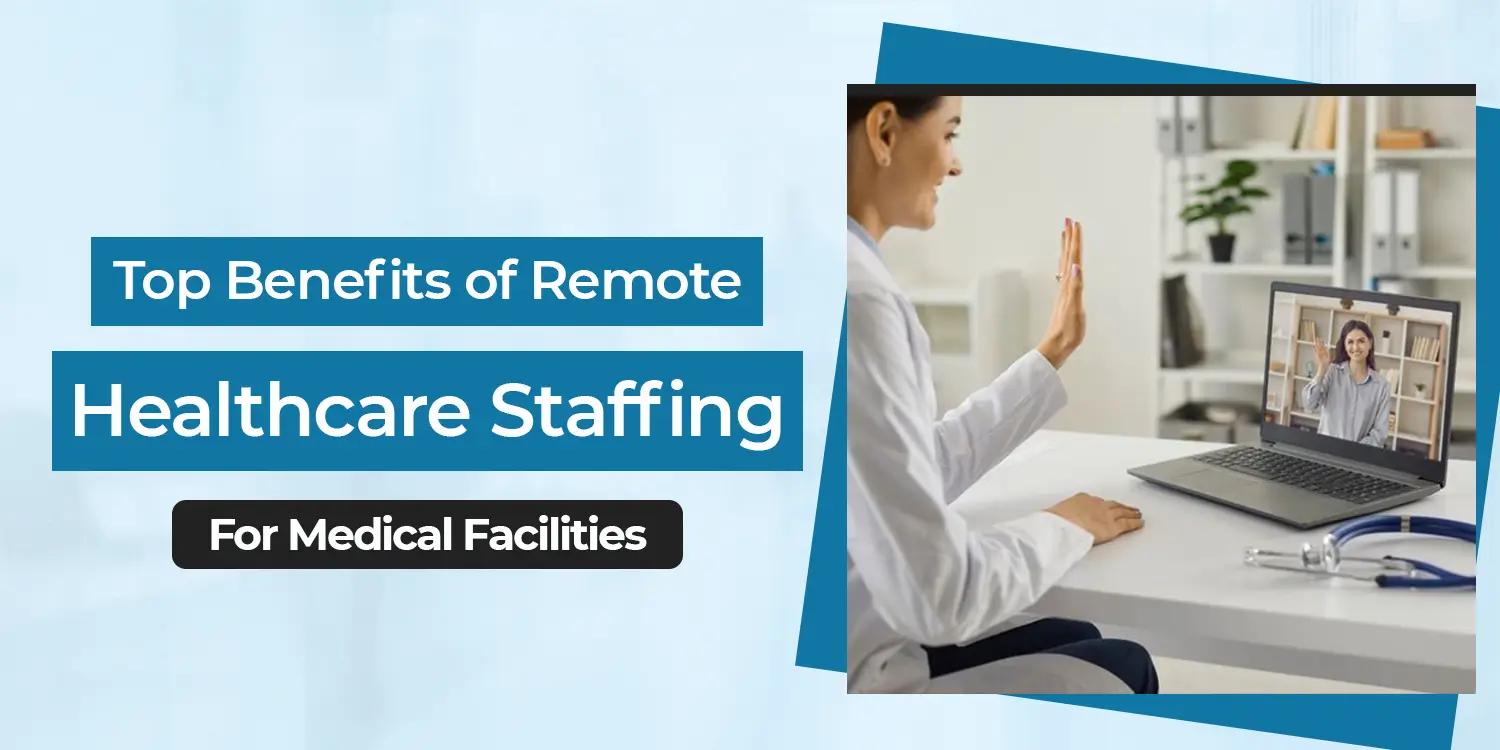The healthcare industry is evolving at an astonishing pace, and one of the most transformative changes in recent years is the rise of remote healthcare staffing. Medical facilities, whether small clinics or large hospitals, are discovering that this modern approach isn’t just about convenience it’s about efficiency, resilience, and improved patient outcomes. Companies like JR Enterprise are helping healthcare providers seamlessly integrate remote staff into their daily operations, creating a new standard for care delivery.
In this article, we’ll explore the top benefits of remote healthcare staffing and why it has become an essential strategy for today’s medical facilities.
1. Access to a Wider Talent Pool
One of the most significant advantages of remote healthcare staffing is the ability to tap into a much larger pool of qualified professionals. Traditionally, medical facilities were restricted to hiring within their local area, which often limited the number of available specialists.
By leveraging remote medical staff services, healthcare organizations can recruit skilled nurses, physicians, billing experts, and administrative staff from across the country or even internationally. This flexibility ensures that positions are filled quickly, reducing staffing shortages that can delay patient care.
2. Improved Cost Efficiency
Every medical facility faces the challenge of balancing quality care with operational expenses. Traditional in-person hiring often comes with high overhead costs, including relocation packages, office space, equipment, and employee benefits.
With a virtual healthcare workforce, facilities can significantly reduce these costs. Remote professionals often use their own setups, minimizing infrastructure investments. Additionally, medical centers can scale their staffing needs up or down based on patient demand, making staffing far more cost-efficient.
3. Enhanced Patient Care and Accessibility
The rise of remote patient care services has changed the way patients interact with healthcare providers. When facilities integrate remote staff, patients benefit from quicker response times, more flexible appointment scheduling, and access to specialized care they might not find locally.
For example, telehealth consultations supported by remote physicians allow patients in rural or underserved areas to receive expert advice without traveling long distances. This accessibility improves overall healthcare equity and enhances patient satisfaction.
4. Reduced Burnout Among On-Site Staff
Staff burnout is a growing issue in the healthcare sector. Doctors, nurses, and support staff often face long hours, heavy workloads, and emotionally taxing environments. Remote healthcare staffing offers relief by redistributing tasks more evenly.
Facilities can use clinic staffing solutions to delegate administrative responsibilities such as scheduling, medical coding, or patient follow-ups to remote professionals. This allows on-site staff to focus on direct patient care, reducing stress and improving job satisfaction.
5. Flexibility and Scalability for Facilities
Healthcare demand is never static it fluctuates with seasons, economic factors, and global health events. A facility may find itself understaffed during flu season or overwhelmed during unexpected emergencies.
By embracing remote healthcare staffing, medical centers gain flexibility. They can quickly scale their teams to meet sudden demand without the delays of traditional hiring processes. Whether it’s a short-term surge or a long-term need, remote professionals can be onboarded efficiently to maintain continuity of care.
6. Better Specialization and Expertise
Another remarkable benefit of remote staffing is access to highly specialized professionals. Some areas of medicine require niche expertise that may not be available locally. Remote medical staff services bridge this gap by connecting facilities with experts who can offer advanced support from anywhere.
For example, a small rural clinic can partner with a remote cardiologist or radiologist through telehealth platforms. This means patients receive top-tier care without the facility having to permanently hire costly specialists.
7. Stronger Business Continuity and Disaster Preparedness
Unexpected crises whether natural disasters, pandemics, or regional emergencies can cripple healthcare operations. Facilities that rely solely on on-site teams may struggle to maintain services when disruptions occur.
However, with a virtual healthcare workforce, medical centers ensure business continuity. Remote professionals can keep administrative tasks, telehealth consultations, and billing services running smoothly even when in-person operations are interrupted. This resilience is invaluable for patient safety and organizational stability.
8. Increased Patient Satisfaction and Trust
At the end of the day, the true measure of success for any medical facility is patient satisfaction. When healthcare organizations adopt remote patient care services, they create a more responsive, accessible, and patient-centered model.
Shorter wait times, seamless teleconsultations, and efficient follow-ups build trust and loyalty among patients. When individuals feel cared for, they’re more likely to return for future visits and recommend the facility to others.
Why Choose JR Enterprise for Remote Healthcare Staffing?
At JR Enterprise, we understand that every medical facility faces unique challenges. That’s why our clinic staffing solutions are designed to be flexible, scalable, and tailored to your needs. Whether you need administrative support, specialized clinicians, or telehealth professionals, our team connects you with the right talent at the right time.
By embracing remote healthcare staffing through JR Enterprise, facilities can improve operational efficiency, enhance patient outcomes, and stay competitive in an increasingly digital healthcare landscape.
Final Thoughts
The healthcare sector is undergoing a paradigm shift, and remote healthcare staffing is at the heart of it. From lowering costs and easing staff burnout to improving patient access and building resilience, the benefits are undeniable.
Medical facilities that embrace this model are not only keeping up with industry trends they’re future-proofing their operations. With partners like JR Enterprise, the transition to a hybrid or fully remote staffing model becomes seamless, empowering facilities to thrive in a world where flexibility and accessibility matter more than ever.


Leave A Comment